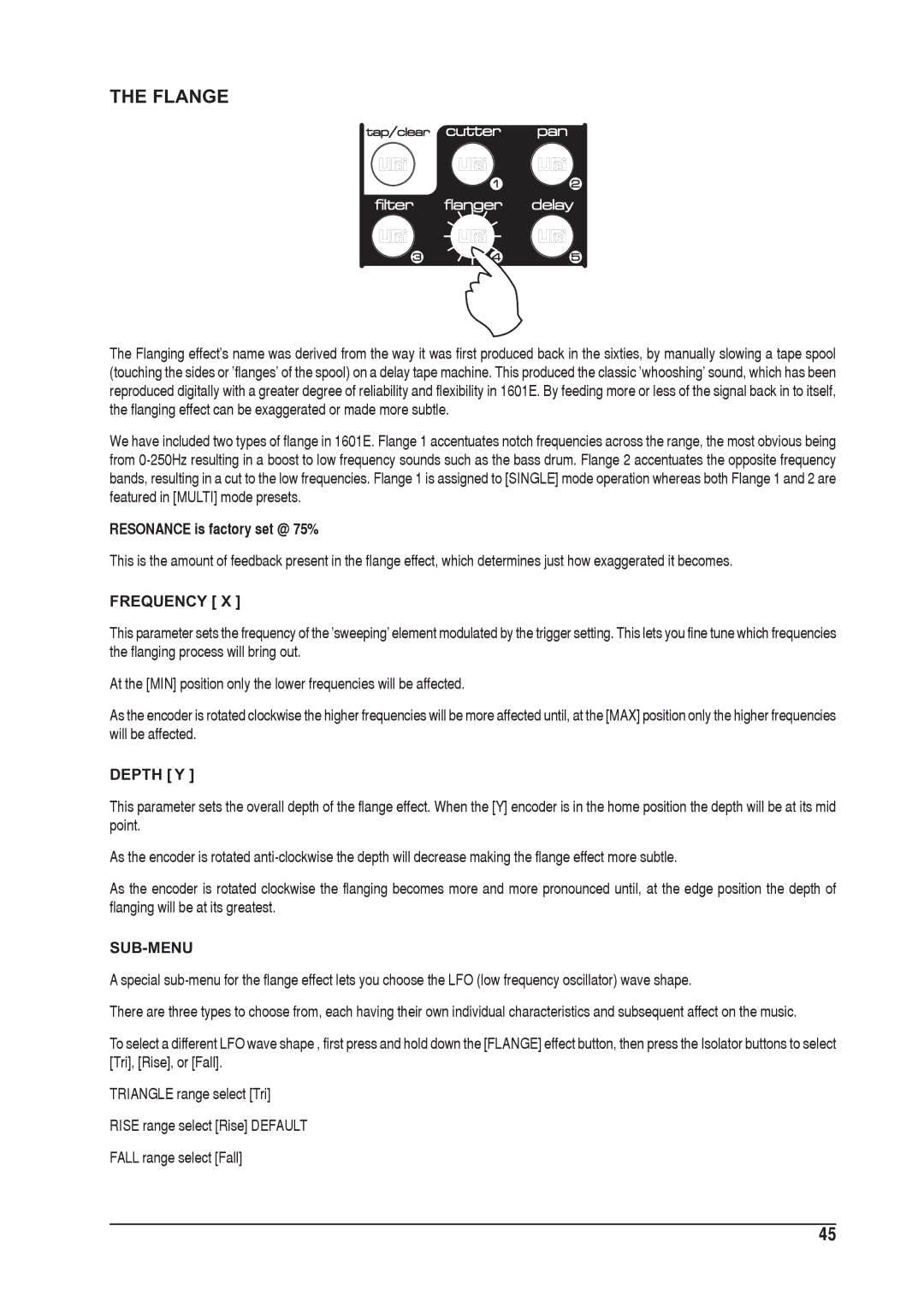
THE FLANGE
The Flanging effect's name was derived from the way it was first produced back in the sixties, by manually slowing a tape spool (touching the sides or 'flanges' of the spool) on a delay tape machine. This produced the classic 'whooshing' sound, which has been reproduced digitally with a greater degree of reliability and flexibility in 1601E. By feeding more or less of the signal back in to itself, the flanging effect can be exaggerated or made more subtle.
We have included two types of flange in 1601E. Flange 1 accentuates notch frequencies across the range, the most obvious being from
RESONANCE is factory set @ 75%
This is the amount of feedback present in the flange effect, which determines just how exaggerated it becomes.
FREQUENCY [ X ]
This parameter sets the frequency of the 'sweeping' element modulated by the trigger setting. This lets you fine tune which frequencies the flanging process will bring out.
At the [MIN] position only the lower frequencies will be affected.
As the encoder is rotated clockwise the higher frequencies will be more affected until, at the [MAX] position only the higher frequencies will be affected.
DEPTH [ Y ]
This parameter sets the overall depth of the flange effect. When the [Y] encoder is in the home position the depth will be at its mid point.
As the encoder is rotated
As the encoder is rotated clockwise the flanging becomes more and more pronounced until, at the edge position the depth of flanging will be at its greatest.
SUB-MENU
A special
There are three types to choose from, each having their own individual characteristics and subsequent affect on the music.
To select a different LFO wave shape , first press and hold down the [FLANGE] effect button, then press the Isolator buttons to select [Tri], [Rise], or [Fall].
TRIANGLE range select [Tri]
RISE range select [Rise] DEFAULT
FALL range select [Fall]
45
